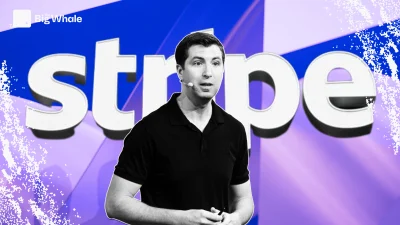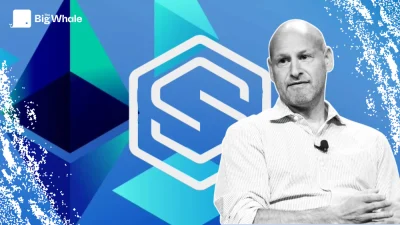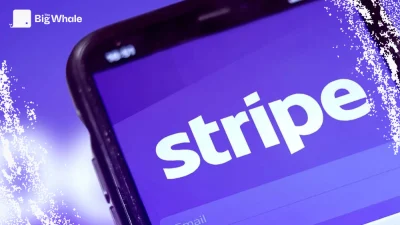Robinhood has just announced a tokenised equity investment offer for its European clients. What does this mean in practical terms?
There are several reasons behind this move. Firstly, we have always believed that blockchain should not be confined to anecdotal or purely speculative uses, such as trading in memecoins or Bitcoin. We firmly believe that it is a technology capable of supporting a much more efficient financial infrastructure. Look at stablecoins like the USDC: they allow transfers to be settled in two seconds, operate 24 hours a day, and offer a fluid experience, without the slowness of traditional banking circuits. We want to bring these advantages to equities.
In practical terms, this means that a user would no longer be the prisoner of a broker, or limited by the constraints of the marketplace or the time of day. What we're trying to show tonight is what Robinhood would look like if we rebuilt it entirely on blockchain. The other dimension is access to assets that have historically been difficult to obtain in Europe: American ETFs, for example. With this technology, we can not only make these products accessible, but also enhance the offering over time, by integrating other markets. You'll even see a surprise announcement tonight about a new type of product that we're preparing.
When you talk about no longer being a prisoner of a broker, what exactly does that mean?
Today, if you hold your shares with an intermediary, it's very difficult to change. To illustrate, I myself am in the process of transferring shares between two brokers and it's hellish: it's been over a month since I started the procedure, and I'm still not sure that my purchase price data will follow. Every single transaction takes an incredible amount of time and you risk losing precious information. By moving to the blockchain, the transfer would be almost instantaneous: with one click, you send your shares to a portfolio of your choice, and that's it. That's the kind of concrete improvement we want to make.
>> Tokenisation takes over the equity market with a bang
Does this mean that a European investor will finally be able to transfer US shares to a non-custodial portfolio like Metamask?
Exactly. Until now, you could do this with your cryptocurrencies, but not with your financial securities. From now on, if you want, you'll be able to send your shares to a self-custody wallet - be it Metamask, Robinhood Wallet or another. You will have the freedom to dispose of them: keep them, lend them, use them as collateral. This is a fundamental change compared with current systems, where access is locked by the broker. This won't be possible from launch, but we hope it will be by the end of the year.
Will these tokenised securities be able to be used as collateral in DeFi?
Technically, yes, even though everything will remain within Robinhood at first. But the idea is to then build bridges to other uses: borrowing, leverage, derivative contracts. In fact, we're launching perpetual future contracts today: you could, for example, imagine a contract with your Nvidia or Tesla shares as collateral. What we're really excited about is the prospect of breaking down the barriers that exist in financial markets today.
>> The DeFi revolution is gradually being integrated into fintechs
How many financial securities will be available?
We're starting with around 200 US stocks and ETFs today. The aim is to increase this to several thousand by the end of the year. And next year, we'll be adding other asset classes: European equities, Asian equities, derivatives, perhaps structured products. That's when we'll be able to demonstrate the value of this infrastructure: if you'd wanted to do the same thing in a conventional system, you'd have needed three different platforms, with multiple costs.
Did you develop all this share tokenisation system in-house or use a service provider?
Most of it was developed in-house. Everything to do with the tokenisation engine - the part that transforms the action into a token - is 100% Robinhood. We carried out our own audits of smart contracts to make sure there were no security flaws. After that, on other products such as staking, we work with a few partners, but we prefer not to name them publicly so that if a problem arises, we are not directly involved. But on the tokenisation of shares, it's an in-house technology.
Robinhood has also announced the creation of its own Layer 2 (tokenised shares will be on Arbitrum before being transferred to the latter when it's ready). Why did you make this choice instead of using an existing public blockchain?
We studied this option very seriously. For a while, there were even rumours that we were interested in Solana. But we realised that certain features specific to shares, such as corporate actions or splits, were going to be very complicated to manage on a public blockchain. So we decided to build an infrastructure that was compatible with Ethereum, Arbitrum, Base, Optimism... but that would allow us to retain control of the roadmap and integrate specific features linked to the financial markets.
Why did you choose to build your Layer 2 on Arbitrum?
From a technical point of view, Arbitrum has several advantages. Their transaction priority system is well thought out and much less aggressive than some competitors. Their Stylus technology is unique: it allows you to develop in Rust, C and C++, so you can build more complex applications. What's more, we have a long history of working with them: they have always worked seriously. That gave us confidence.
Will Robinhood be picking up all the costs?
Yes, for the moment all the costs will go to Robinhood. But our intention is not just to generate revenue. This is first and foremost an exploration phase, to see what works and grow the ecosystem.
Are there any plans to launch a governance token on this Layer 2?
For the moment, we don't have any plans in that direction. Our priority is to get the system adopted and to create as many uses as possible. If one day we realise that a governance token is the best way of supporting this adoption, we'll consider it. But at the moment, there are no concrete plans in this direction. It's more something we'll keep in reserve if the context requires it.
Do you have any plans to go even further and launch your own stablecoin?
We've asked ourselves that question several times. It's true that if we rolled out a Layer 2, it might seem logical. But honestly, today, there is already a proliferation of stablecoins. Our analysis is that adding one more doesn't necessarily have a unique value, and that it creates confusion. So we preferred to support the USDG, which is the Paxos stablecoin: revenues are shared with all participants in the consortium (Kraken, Bullish, OKX, Anchorage, us...). USDG has just been approved in Europe, so we're going to start offering it in the application. Our strategy is more to contribute to this common ecosystem than to add a proprietary token.
And for European users, are you going to offer stablecoins denominated in euros?
Yes. Bitstamp, which we've just acquired, already supports several, and we're going to integrate them into Robinhood too. Everything is designed to be local: for example, when you use our application, share prices are displayed in euros, not dollars. The idea is to reduce friction as much as possible.
What's the timetable for your next releases?
Starting tonight, we're launching staking in the United States. We are also activating smart exchange routing: instead of placing your orders through market makers, they will go directly to the exchanges, with a sliding scale of charges according to volume. This is designed to appeal to more experienced traders. On the product front, we have Legend, our advanced web platform with technical analysis and sophisticated tools. Advanced charts on mobile phones will be arriving gradually. Cortex, our artificial intelligence agent that helps you decipher the news, is also being rolled out. Finally, the credit card that lets you buy cryptos with every payment will arrive later. In Europe, all the functionalities - shares, staking, perpetuals - are starting now and will be extended over the next few months.
Do you envisage strong synergies with Bitstamp, beyond licences?
Yes. On the advanced trading side, Bitstamp will be one of the exchanges integrated into our Legend product. On the Bitstamp application side, which is more basic, we'll be importing Robinhood features. Finally, Bitstamp has a SaaS product called Bitstamp-as-a-Service, which enables other companies to easily integrate crypto services. With our financial backing and user base, we think we can take it to another level.
Will the Bitstamp brand disappear?
No. For now, we've just added "Bitstamp by Robinhood" to the site. Bitstamp has a long history, and is one of the oldest exchanges still active. We have no intention of erasing this identity.
If we take a step back, how do you see the market evolving?
I think we're coming to a pivotal moment. There has been a lot of talk and little action in recent years. This time, we've decided to talk loud and clear about what we're up to. And we can already see that the competition is getting restless: as soon as we started communicating, many new products were released elsewhere. It's a sign that the market is ready to move. For me, the real trigger will be when people realise that they no longer need to wait until Monday morning to trade. Clearing technology dates back to the 1980s: in the United States, the DTCC still works with paper systems and printers. It's totally outdated. Once we've migrated to a blockchain model, everyone will find it obvious.
Can we say that your vision is that the entire financial infrastructure will one day be rebuilt on blockchain?
Yes, I think so. When you look at the weight of crypto at Robinhood - almost 30% of revenues - you can see that it's already a mainstay of our business. In the long term, I believe that all the services we offer today using traditional systems will switch to blockchain: more efficient, cheaper, more secure. It's an inevitable evolution.
>> Tokenisation Barometer 2025: The Transformation of Financial Markets
Heading 1 Heading 2 Heading 3 Heading 4 Heading 5 Heading 6 Lorem ipsum dolor sit amet, consectetur adipiscing elit, sed do eiusmod tempor incididunt ut labore et dolore magna aliqua. Ut enim ad minim veniam, quis nostrud exercitation ullamco laboris nisi ut aliquip ex ea commodo consequat. Duis aute irure dolor in reprehenderit in voluptate velit esse cillum dolore eu fugiat nulla pariatur.
Block quote Ordered list
Item 1 Item 2 Item 3 Unordered list
Text link
Bold text
Emphasis
Superscript
Subscript









